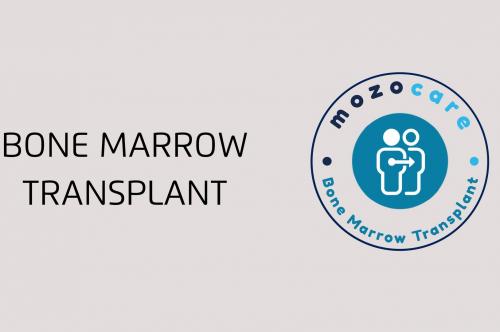Stem Cell Infusion

For Previous Blog you may visit : https://www.selfgrowth.com/articles/stem-cell-source
Stem cells are routinely cryopreserved with dimethyl sulfoxide
(DMSO). These products are red blood cell (RBC) depleted before
cryopreservation and thawed at 37˚C water bath before infusion.
They should be infused through standard 170-micron red blood
cell filters
General Reactions and Response to Infusion Toxicity
The infusion of hematopoietic stem cells may be associated with
toxicities that are either specific to hematopoietic products or
general to all blood product infusions. The following text provides
a minimal guideline to the workup and management of infusion
toxicities. Each anticipated toxicity is defined and a plan of action
is outlined.
Bleeding
■ Unprocessed marrow contains approximately 20,000 units of
heparin, which is infused over 1 to 4 hours. This will result
in anticoagulation to a degree sufficient to result in clinical
bleeding. Patients at risk are those with a history of recent
surgery (e.g., recent line placement or revision), hemorrhagic
cystitis, severe thrombocytopenia. However, bleeding can
occur in any individual.
■ For a patient with a known hemorrhagic risk, the marrow
should be concentrated and washed to remove heparin. If
the risk factor is known before a harvest takes place, acid citrate dextrose (ACD) can be used in place of heparin as a cryopreservative, if allowed by protocol.
■ Infused heparin can be reversed with protamine. One mg of
protamine will neutralize approximately 100 units of heparin. Maximum dose is 50 mg and the infusion rate should not
exceed 5 mg/minute.
Fevers
■ Fevers after infusion of stem cell and blood products can be
due to bacterial contamination of the product. Often stem
cells have a long travel period before infusion, giving skin
contaminants an opportunity to grow. Severe fevers, hypotension, or evidence of sepsis needs to be treated aggressively
until cultures are either negative or establish an organism.
■ Fevers may be due to contaminated product, cytokines
released during collection and processing, or infection coincidental to stem cell infusion.
■ Low-grade fevers can be observed if there is no rigor, hypotension, or systemic symptoms suggestive of infection. The
marrow infusion should be completed. The use of antibiotics
and/or antipyretics should be up to the treating physician.
■ High fevers ( >100.5) should result in the collection of blood
cultures and stem cell product culture. It is generally prudent
to start broad-spectrum antibiotics until cultures are known
to be negative and the patient has defervesce and is clinically stable.
Fluid Overload
■ Fluid overload should be treated by slowing the infusion and
treating with diuretics as clinically indicated.
DMSO Toxicity
■ DMSO toxicity (nausea, vomiting, erythema, headache, pruritis, dizziness, bad-taste in mouth, changes in blood pressure, heart rate) can generally be treated by slowing the rate
of infusion. Occasionally, hypotension will require the use
of volume expansion. This is typically accomplished with a
rapid saline infusion. If severe or not corrected in 20 minutes, consider dopamine. If symptoms are severe the product
should have the DMSO removed.
■ DMSO-preserved product has a distinctive odor (charitably
described as “garlic”). It can persist in the patient’s room for
48 to 72 hours.
■ Mild intravascular hemolysis may occur due to remaining
RBCs in marrow collection. Urine tests may be positive for hemoglobin for 24 to 48 hours. This is commonly associated
with a rise in serum lactate dehydrogenase (LDH). Maintain
hydration and follow creatinine.
■ Arrhythmias such as atrial fibrillation and bradycardia can
occur. Hypotension, hypertension, and renal insufficiency
can occur. Headache, nausea, vomiting are common. All
patients should have cardiac monitoring during stem cell
infusion. If arrhythmia is unresponsive to usual treatment
measures, it is recommended to involve a cardiologist for
management.
■ It is recommended that the amount of DMSO be limited to
40 mL/day regardless of the patient’s weight. If several products are stored, infusions can either be spread out over more
than one day or the DMSO can be washed out.
Acute Hemolytic Transfusion Reaction
■ A standard blood transfusion reaction investigation should
be initiated.
■ Hydrate the patient to ensure rapid urine flow. If necessary,
augment with lasix or mannitol.
■ If DIC is present treat with platelets, fresh frozen plasma
(FFP), and transfusions as clinically indicated.
Patent Foramen Ovale
Approximately 10% of the population has a patent foramen ovale
(PFO). This is generally not a problem. However, in some patients
with increased right-sided pressures there may be R→L blood
flow. Infusion of stem cell products, especially, if a filter is not
used can result in cerebral emboli because of cell aggregates in
the product. We recommend using a standard blood filter for all
stem cell products that may have cellular or fibrin aggregates.
For More Information about : Bone Marrow Transplant Cost in India
Advertise on APSense
This advertising space is available.
Post Your Ad Here
Post Your Ad Here
Comments